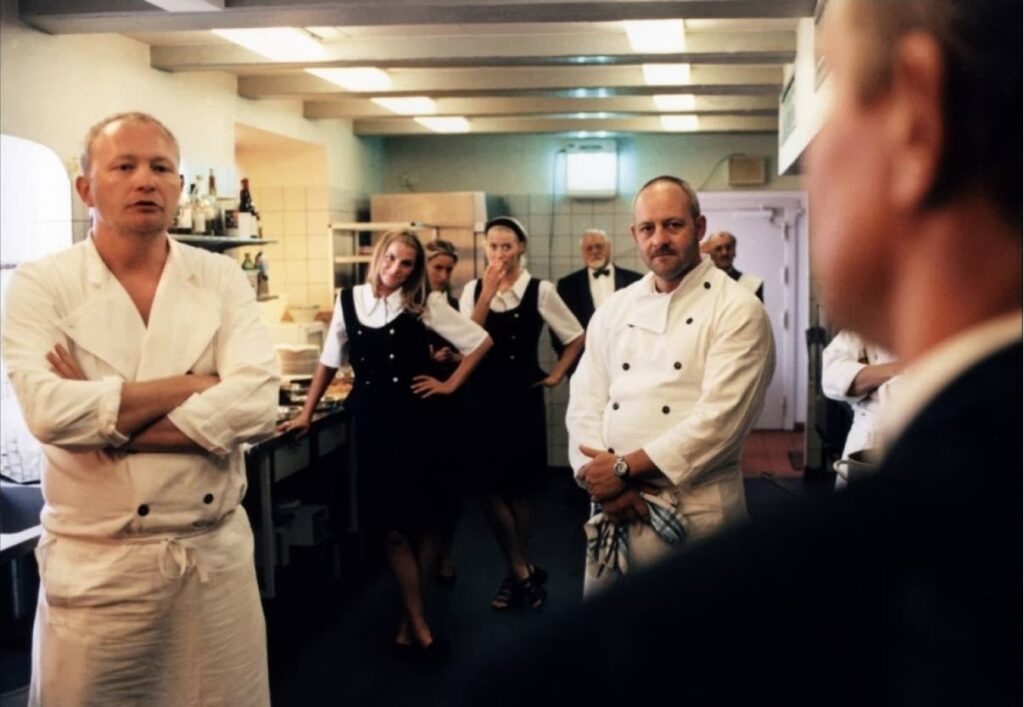
The evolution of camera language in the cinema is constantly at work. Either the camera itself is changing or the style and idea of frame is changing. Festen (1998) is a unique film since it revolutionizes both aspects of camera work. It is well known that it is the first major Dogme film, but one has to look beyond those specifications to see the film’s other significances.
The use of camera movement around moving characters [consider the first sequence in which Michael ejects Christian from the house] in director Thomas Vinterberg’s hands creates a dynamic tension as the camera pulls in and out from the action. As he pulls into Michael’s screaming face, then spins to the beating of Christian some two yards away, Michael’s character is given power. Michael is the largest form in the frame, after the spin, the camera looks down on the action while his commands are still audible. Afterwards, Vinterberg does the reverse; Christian’s wounded face fills the frame then the camera spins and occupying a third of the frame each, Michael and his cronies turn and walk away. This camera action does not contradict the distribution of power in its characters, but reinforces it in the telling of both sides. However, the continuity of power would be disrupted if the departure of Michael and his cronies had not been shot from such a low angle.
The same distribution of power [a recurring theme in the film] presents itself in the kitchen scenes. Often the camera follows the staff through the kitchen while doing their chores with the ever-present sound of the head chef shouting commands. The payoff here is that, while following the backs of the staff, the camera will, upon reaching the head chef, pull away and down. This presents the head chef with a sort of grand entrance every time with only his dialogue to foreshadow his arrival. It is the motion of the camera in reaction to him that gives his character power. The combination of classic low angles with kinetic hand held camera work presents the audience with the opportunity to invest in the film as a “documentary” but be manipulated with the camera’s illusions.
Vinterberg uses his distribution of power method in the film later without the “swoosh” of the camera spin or the obvious shaking of a hand held operation. As Christian confronts his father, the shot will cut from a close-up of Christian to a wide-shot of his father’s table. Here, the larger than life figure of Christian is given power over the many “smaller” characters seated with his father. The technique also adds to the dramatic effect of Christian’s revelation; his father and all who turned a blind eye now literally shrink and lose their grip over the situation. This motif is carried out in the removal of Christian as well, since Vinterberg leaves the father’s table intact. The men who remove Christian come from side tables either in the shot of the father or in quick cut aways. Christian’s removal begins in his aforementioned close-up and he is literally pulled from frame so that a jarring cut is necessary and we enter more hand held work. The constant reassuring of this power distribution enforces the confrontation on the audience again and again till they are in tight association with the other guests removed from the central plot.
